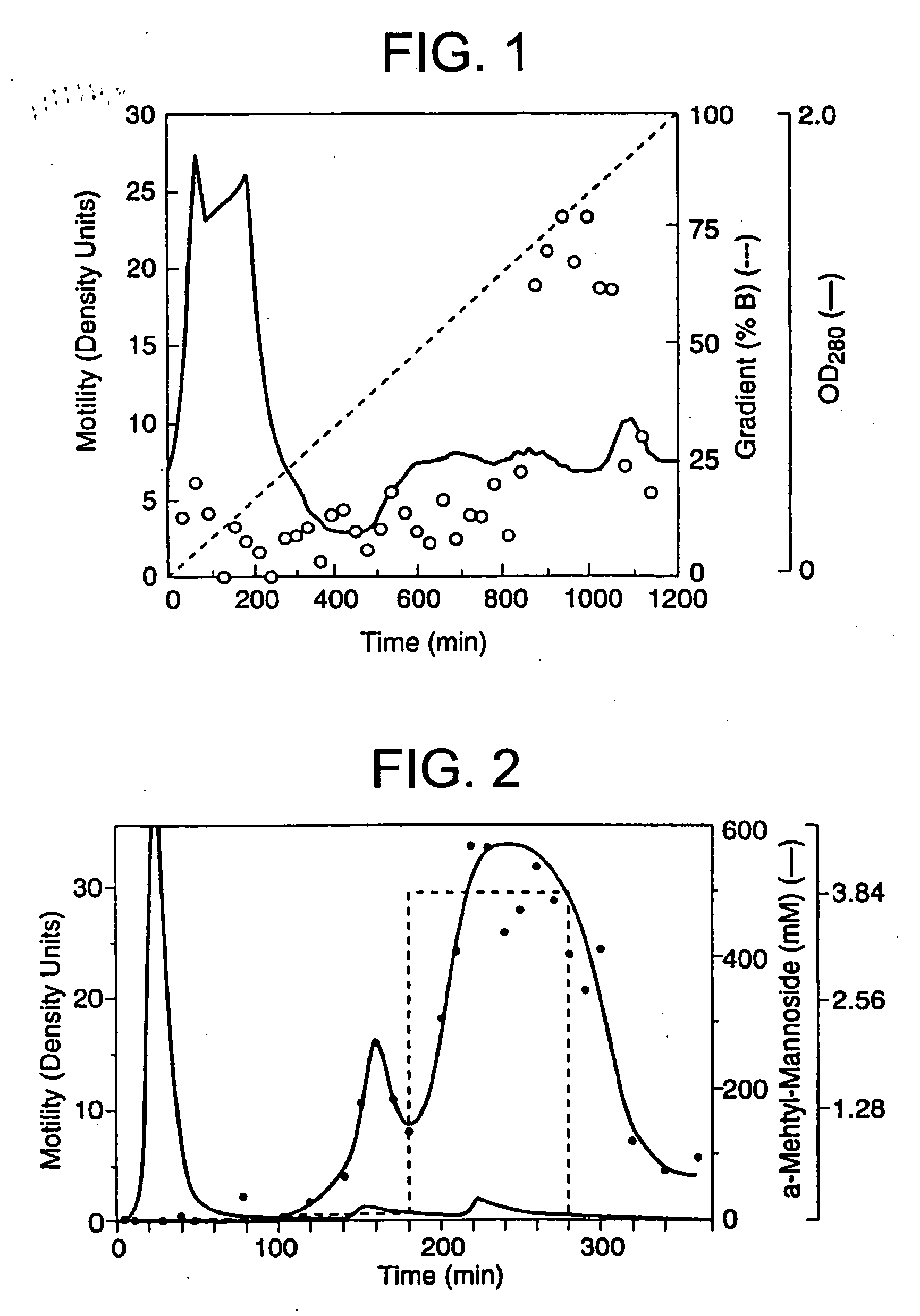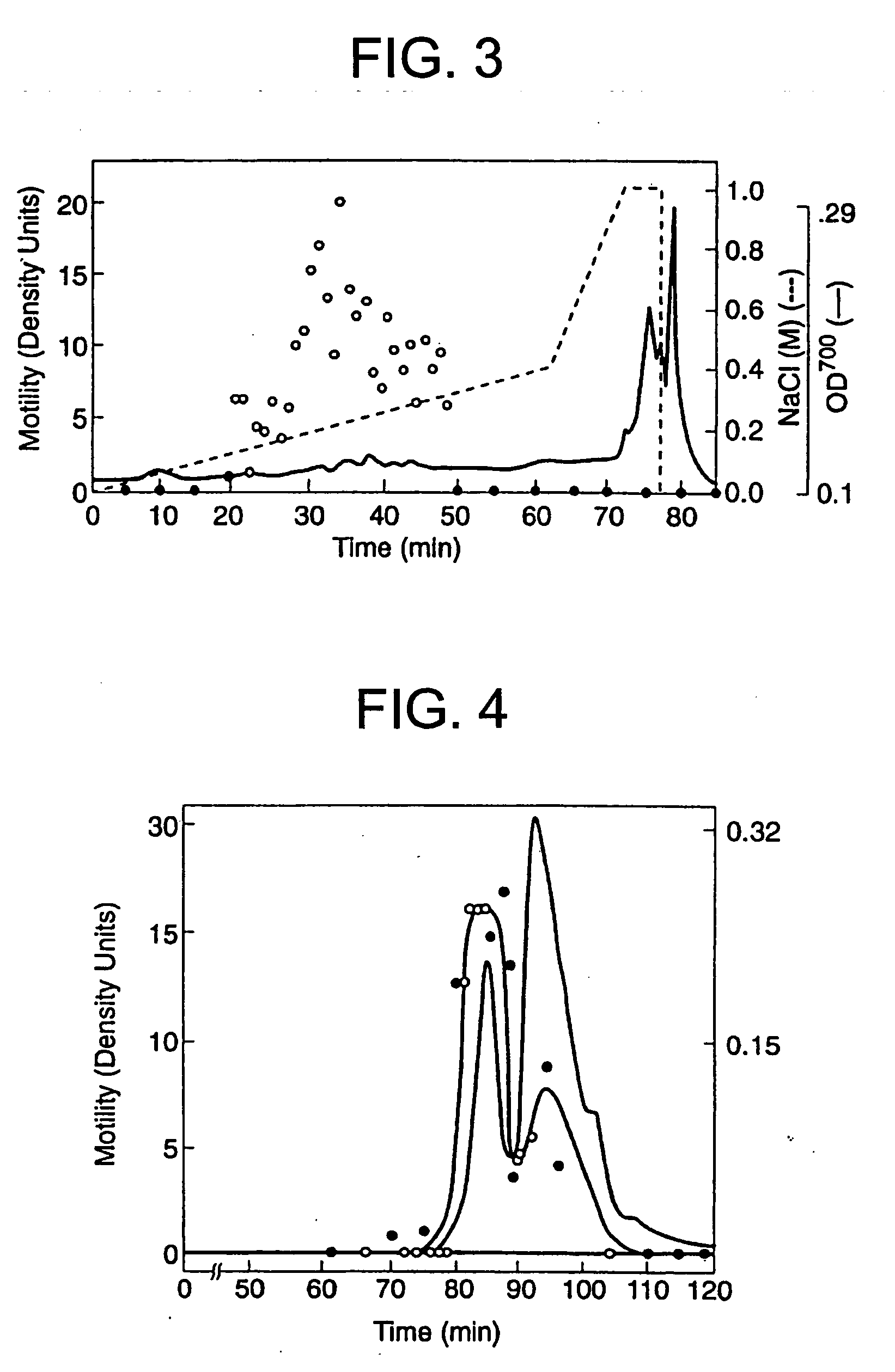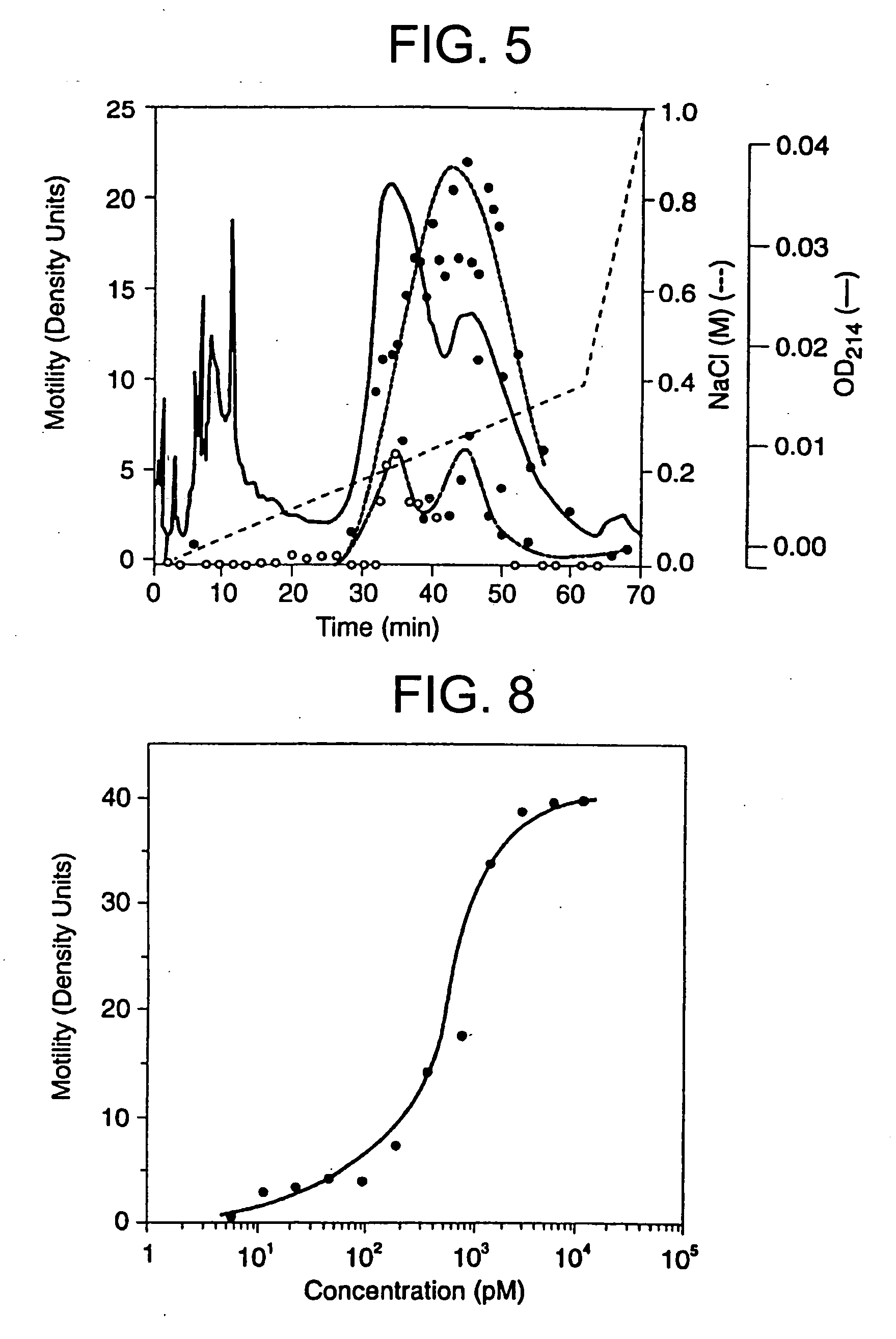Autotaxin: motility stimulating protein useful in cancer diagnosis and therapy
a technology of autotaxin and motility factor, which is applied in the field of motility stimulating protein, can solve the problems of homogeneity and sequence failure of motility factors identified to date, and achieve the effect of stimulating motility
- Summary
- Abstract
- Description
- Claims
- Application Information
AI Technical Summary
Benefits of technology
Problems solved by technology
Method used
Image
Examples
example 1
Purification of Autotaxin
[0086] The A2058 cells had been previously shown to produce protein factors which stimulate motility in an autocrine fashion (Liotta, et al., 1986). Conditioned medium from these cells was therefore used to identify and purify a new motility-stimulating factor, which is here named autotaxin and referred to as ATX. Since the purification was monitored with a biological assay, motility-stimulating activity had to be maintained throughout. The activity proved to be labile to freezing, acidic buffers, proteases (but not DNase or RNase), reduction, strong chaotrophic agents (e.g. >4 M urea), and a variety of organic solvents (isopropanol, ethanol, acetonitrile). An organic solvent, ethylene glycol, which did not decrease bioactivity, was added for both storage and chromatographic separation.
[0087] 100-200 L of serum-free conditioned medium were required in order to produce enough ATX for amino acid sequence analysis. The medium contained low concentrations of b...
example 2
Characterization of Autotaxin
[0094] Two dimensional gel electrophoresis of the purified protein (FIG. 7) revealed a single predominant band. The band slopes downward slightly toward the basic side of the gel in a manner that is characteristic of glycosylated proteins. A basic pI of 7.7±0.2 was essentially the same whether the isoelectric focusing was run under non-equilibrium conditions (5 hr.) or was allowed to go to equilibrium (17 hr.).
[0095] A dilution curve of the purified protein is shown in FIG. 8. The protein is active in the picomolar range and 1 unit of activity appears to correspond to a concentration of 400-600 picomolar (or approximately 10 fmol of ATX / Boyden chamber well). When dilutions were begun at higher concentrations of ATX, the resultant curve showed a broad plateau with down-regulation at the highest concentrations. The motility response to purified autotaxin is highly sensitive to pertussis toxin (hereinafter referred to as “PT”) (Table 2 and FIG. 9) with ap...
example 3
ATX Degradation and Determination of Amino Acid Sequence
[0098] Attempts to obtain N-terminal sequence information from purified ATX repeatedly proved futile. The purified protein was therefore, sequentially digested and the resulting peptides fractionated by reverse phase chromatography. The results are shown in FIG. 11. Multiple sharp peaks including clusters at both the hydrophilic and hydrophobic ends of the gradient are seen.
[0099] Several of these peptide peaks were chosen randomly for Edman degradation and N-terminal amino acid sequence analysis. Seven of the eight peaks (shown in FIG. 11) chosen gave clear single sequence information as seen in Table 4. Using material from a separate digestion and purification, the remaining four sequences were also obtained.
[0100] Separate sense and antisense oligonucleotide probes were synthesized according to the fragment sequences of Table 4 by methods known to one skilled in the art. Representative probes are shown in Table 5.
TABLE ...
PUM
| Property | Measurement | Unit |
|---|---|---|
| molecular mass | aaaaa | aaaaa |
| pH | aaaaa | aaaaa |
| pH | aaaaa | aaaaa |
Abstract
Description
Claims
Application Information
 Login to View More
Login to View More - R&D
- Intellectual Property
- Life Sciences
- Materials
- Tech Scout
- Unparalleled Data Quality
- Higher Quality Content
- 60% Fewer Hallucinations
Browse by: Latest US Patents, China's latest patents, Technical Efficacy Thesaurus, Application Domain, Technology Topic, Popular Technical Reports.
© 2025 PatSnap. All rights reserved.Legal|Privacy policy|Modern Slavery Act Transparency Statement|Sitemap|About US| Contact US: help@patsnap.com



